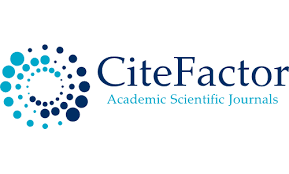Observations on the Poetics of Erkin Vahidov's Poetry
Keywords:
aruz, arabic, persian, romanticAbstract
Erkin Vahidov's poetry, in particular, his ghazals (a genre in poetry) and poems, fell into a period of condemnation and rejection of aruz (a style in lyrics). Perhaps this is why the use of complex words in the work of this particular poet, the ability to turn simple, folk sentences into beautiful poetic lines, has emerged. Nevertheless, Erkin Vahidov was able to create unique examples of poetry without focusing on the beautiful Arabic and gorgeous Persian words. Thus he modernized the old aruz style. However, the same cannot be said of his artistry, that is, his attitude to the means of artistic expression. In other words, Erkin Vahidov did not simplify the traditional arts, but "discovered" their new aspects in the example of his poetry. We study the stylistic devices in the poem "Human" in the lyrics of the poet. Samples of stylistic devices are analyzed in the text of the poem, which reveals the universal, philosophical idea.
References
Vohidov E. Humanity. Teacher. Toshkent: 2018. - p. 162.
Alisher Navoi. Encyclopedic Dictionary. Tashkent: Sharq, 2016. - P.192.
Vohidov E. Humanity. Teacher. Toshkent: 2018. - p. 162.. (Examples from the following verse are also taken from this source, and the parentheses used in the book are given in parentheses)
Is’hakov Y. Dictionary of word art. Tashkent: Uzbekistan, 2014. - pp. 192, 206, 94; Hojiahmedov A. A masterpiece of classical art. Tashkent: Sharq, 1999. –pp. 9, 83, 84; Yusupova D. Rules of dream weight and basics of classical poetics. Tashkent: Education-media, 2019. - pp. 169,171.
Alisher Navoi. Lison ut-tayr. Tashkent: Fan, 1996. - P.240.
Hoshimov O. Between two doors (novel). Tashkent: Sharq, 1996.
Downloads
Published
Issue
Section
License

This work is licensed under a Creative Commons Attribution-NonCommercial 4.0 International License.
User Rights
Under the Creative Commons Attribution-NonCommercial 4.0 International (CC-BY-NC), the author (s) and users are free to share (copy, distribute and transmit the contribution).
Rights of Authors
Authors retain the following rights:
1. Copyright and other proprietary rights relating to the article, such as patent rights,
2. the right to use the substance of the article in future works, including lectures and books,
3. the right to reproduce the article for own purposes, provided the copies are not offered for sale,
4. the right to self-archive the article.













